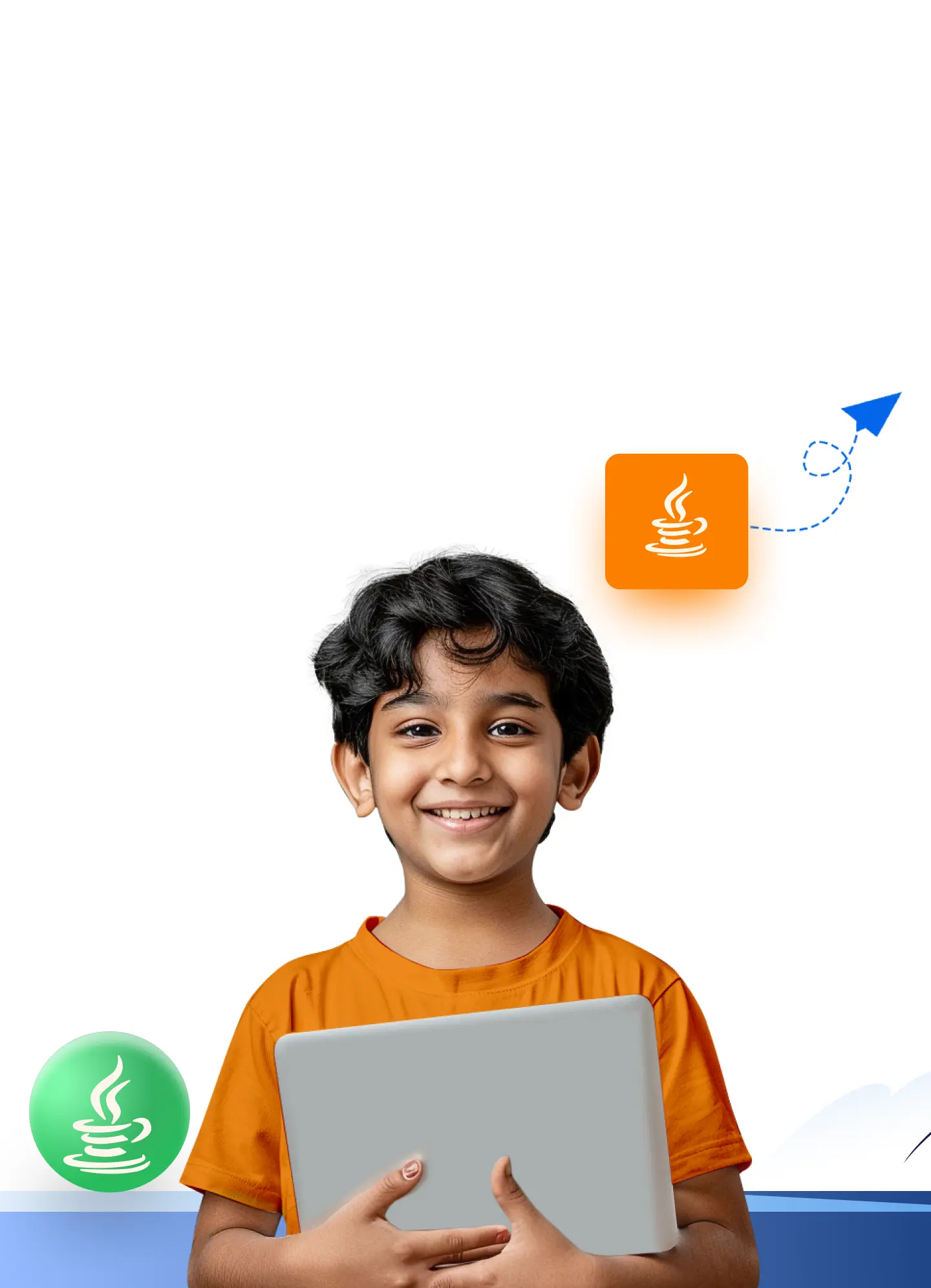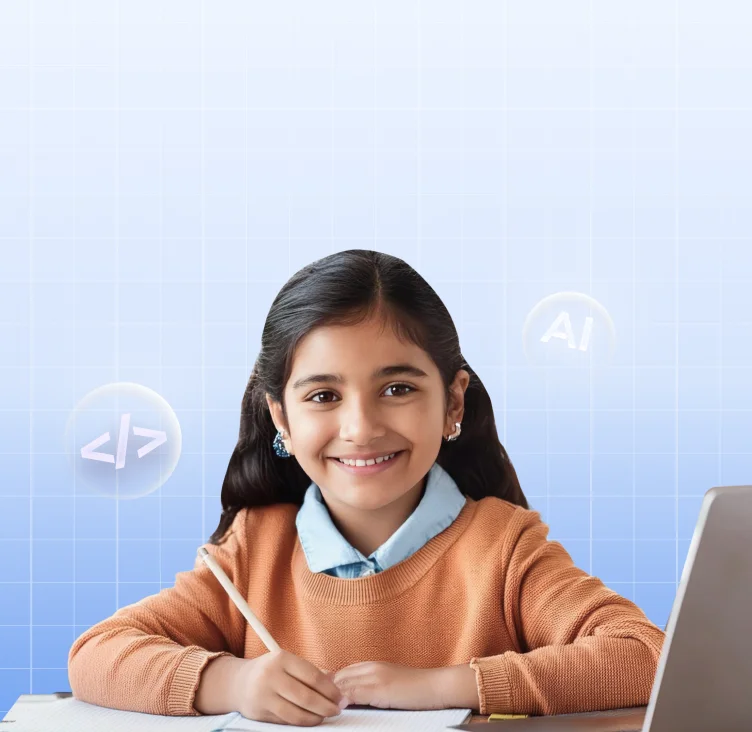Computational Thinking: A Comprehensive Guide for Kids and Parents
By Srinithi SankarHave you ever watched your kid tackle a jigsaw puzzle? Piece by piece, they analyze, strategize, and piece together a solution. What if I told you there’s a way to apply that same puzzle-solving zeal to not just games but real-world problems, preparing them for the future?
Enter- computational thinking for kids. It’s not just about coding or computers; it’s a way of breaking down complex problems, making them more understandable and manageable. This skill set is becoming as fundamental as reading and writing, and the sooner kids get comfortable with it, the better equipped they’ll be for almost any challenge the digital age throws at them.
So, whether your child dreams of building robots, designing video games, or solving the world’s big puzzles, understanding computational thinking is the first step on a journey filled with endless possibilities. Ready to dive in? Let’s decode together what computational thinking is and why it’s the superpower your child needs to thrive in the 21st century.
1. What Is Computational Thinking?
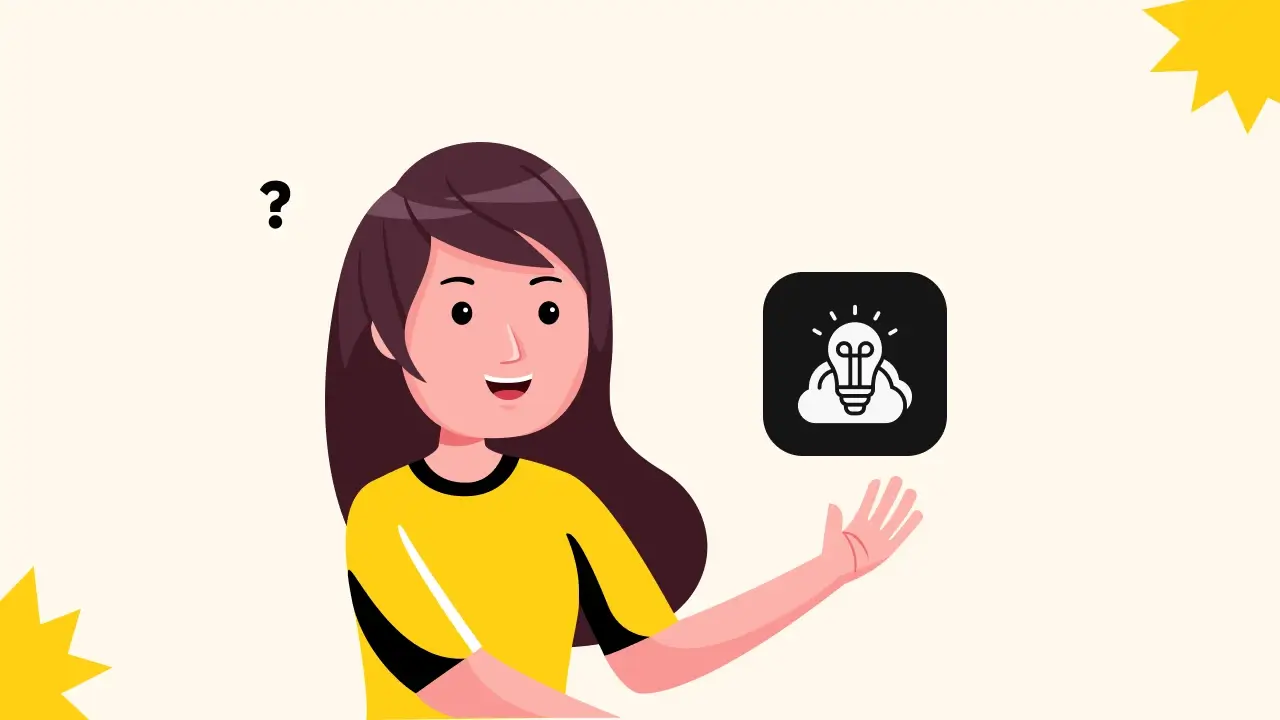
Imagine you’re in a kitchen trying to bake a cake but have never done it before. Where do you start? You follow a recipe, which is essentially a set of instructions or an algorithm. Computational thinking works similarly. It’s a method of problem-solving that teaches kids (and adults too!) how to tackle big problems by breaking them down into manageable parts, looking for patterns, ignoring unnecessary information, and devising step-by-step solutions.
But it’s not just about computers. Sure, it’s a term that sounds techy, but at its heart, computational thinking for kids is about developing a mindset that helps decode everyday problems as well as complex algorithms. It’s about learning how to think in ways that a computer might, which can be incredibly powerful in our digital world.
This skill set includes a bunch of fun and engaging strategies like decomposition (breaking down tasks into smaller, more manageable parts), pattern recognition (spotting similarities or trends), abstraction (focusing on the important information only), and algorithms (creating a step-by-step solution).
But, why does every child need to learn computational thinking skills?
2. Why Every Child Needs Computational Thinking Skills
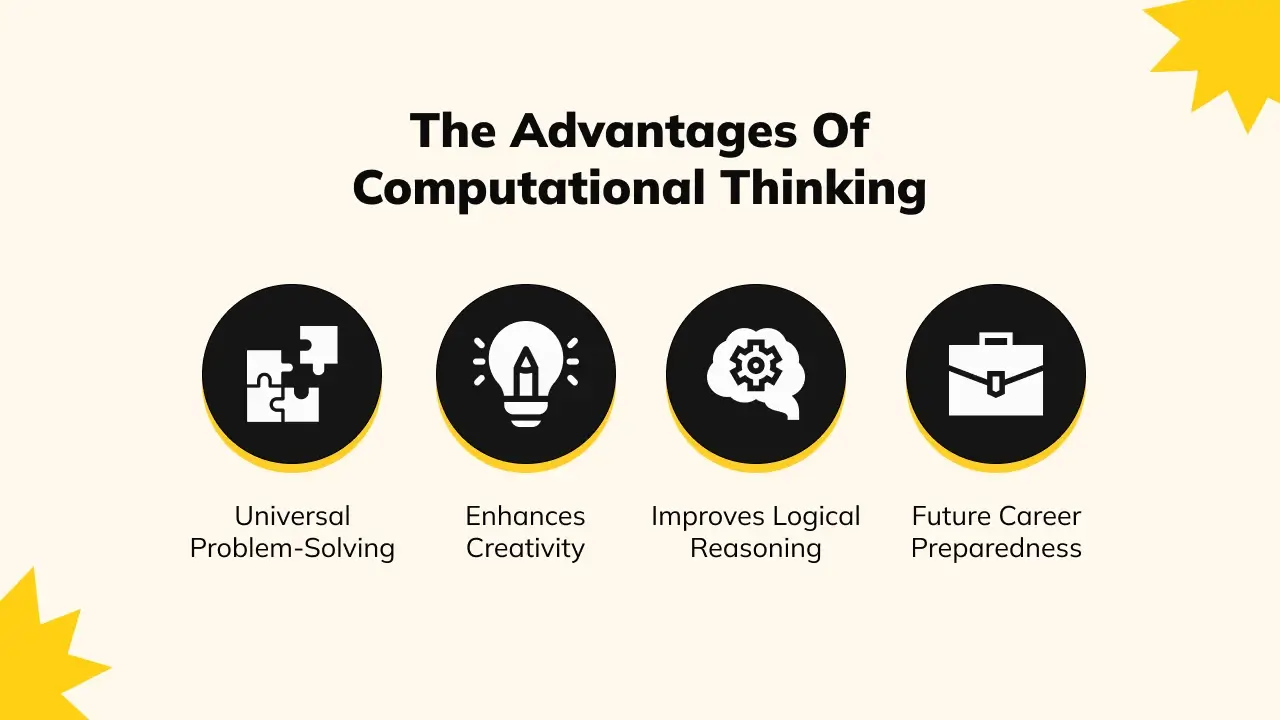
In our rapidly evolving digital world, computational thinking stands out as a crucial skill set every child needs to develop. It’s not just about preparing them for future careers in technology; it’s about equipping them with the ability to solve problems, think critically, and innovate across any field. Here’s why computational thinking is indispensable for kids today:
- Universal Problem-Solving: Computational thinking teaches children how to break down complex issues into manageable parts, making any problem more approachable and solvable.
- Enhances Creativity: By learning to see problems from different angles and exploring multiple solutions, kids develop a creative approach to challenges, understanding there’s often more than one way to reach a conclusion.
- Improves Logical Reasoning: Identifying patterns and making data-driven predictions fosters logical reasoning, a skill that benefits children in both academic subjects and daily decision-making.
- Future Career Preparedness: As the job market evolves, the skills gained from computational thinking, such as analyzing data, designing systems, and understanding technology, will be invaluable, regardless of the industry.
In essence, computational thinking equips kids with a versatile skill set that prepares them for a wide range of situations and careers. It empowers them to not just navigate the digital world but to shape it.
3. The Core Elements of Computational Thinking
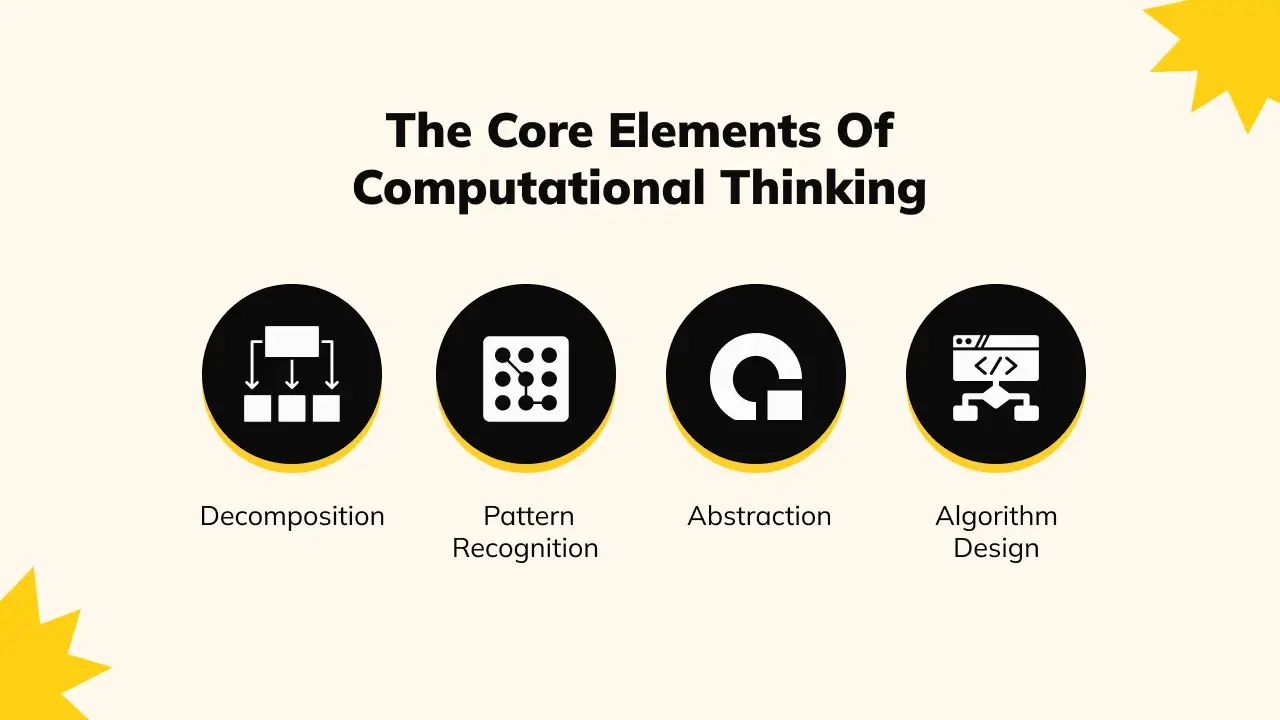
Now that we are aware of the concept of computational thinking and its importance in the futuristic development of kids, let’s now understand various core elements of computational thinking, which include Decomposition, Pattern Recognition, Abstraction, and Algorithm Design.
3.1 Decomposition: Simplifying Complex Problems
The first core element or first step in the computational thinking process is decomposition Decomposition is all about breaking down a big, intimidating problem into smaller, more manageable pieces.
Think of it like tackling a giant pizza. Eating it in one go? Impossible. But slice it up, and suddenly, it’s not so daunting. It teaches kids that no problem is too big if you approach it one piece at a time.
3.2 Pattern Recognition: The Key to Predictive Thinking
Once you have the fragmented parts of the problem, we will now move to the next step or the second core element of computational thinking, which is recognizing the underlying or visible patterns. Pattern recognition involves spotting similarities or trends in information.
By recognizing patterns, kids can predict what comes next, which is crucial for planning and making informed decisions. Interactive exercises like finding patterns in the weather, sports scores, or even in the arrangement of leaves on a plant can make learning this skill a fun adventure.
3.3 Abstraction: Focusing on What Really Matters
The third element of computational thinking in kids will be abstraction. Abstraction is about filtering out the noise and focusing on the important information. Teaching kids to think abstractly helps them concentrate on the core aspects of a problem, making it easier to solve.
Strategies for teaching abstraction include activities like summarizing stories to their essentials or mapping out the important steps in a process without getting bogged down by details.
3.4 Algorithm Design: Creating Step-by-Step Solutions
Finally, the last step, or algorithm design, is about creating a clear, step-by-step plan to solve a problem. It’s like writing a recipe for that cake in a step-wise manner. Kids will need to think of a solution based on their learnings from the above three elements.
Simple coding projects, such as building a basic game or automating a simple task, can introduce kids to the concept of algorithms. These projects will help them understand that by following specific steps, they can achieve the desired outcome, teaching them the power of planning and precision.
By mastering these elements, kids not only learn to think like a computer but also gain valuable life skills. They learn that no problem is too complex, no solution is too far out of reach, and that with the right approach, they can conquer any challenge.
Up next, we’ll see computational thinking in action across different age groups.
Also Read: Start Your Kids Coding Journey with These Programming Languages
4. Computational Thinking for Different Age Groups
Computational thinking can manifest itself differently across various stages of childhood development. It’s one thing to understand the concepts; it’s another to see them turn into real-world skills for kids. Let’s see how:
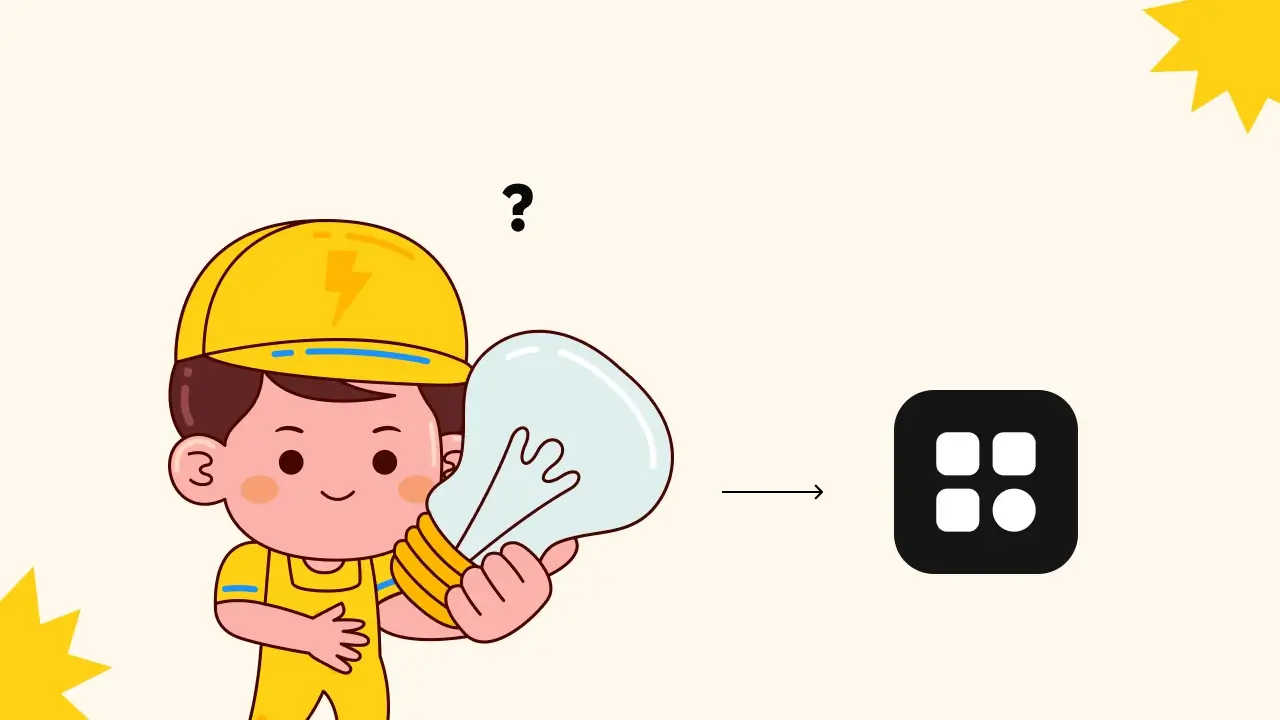
4.1 Computational Thinking for Preschoolers
Preschool is a great stage to get a head start on computational thinking. At this age, it’s all about playful exploration and simple problem-solving.
Picture a group of kids building a tower with blocks. They’re not just playing; they’re learning decomposition by breaking the project into steps, recognizing patterns of stability, and using abstraction to ignore the color of the blocks as irrelevant.
Simple games that involve sorting shapes or sequencing steps for a daily routine can lay the foundation for computational thinking, showing that it’s not only fun but also part of everyday life.
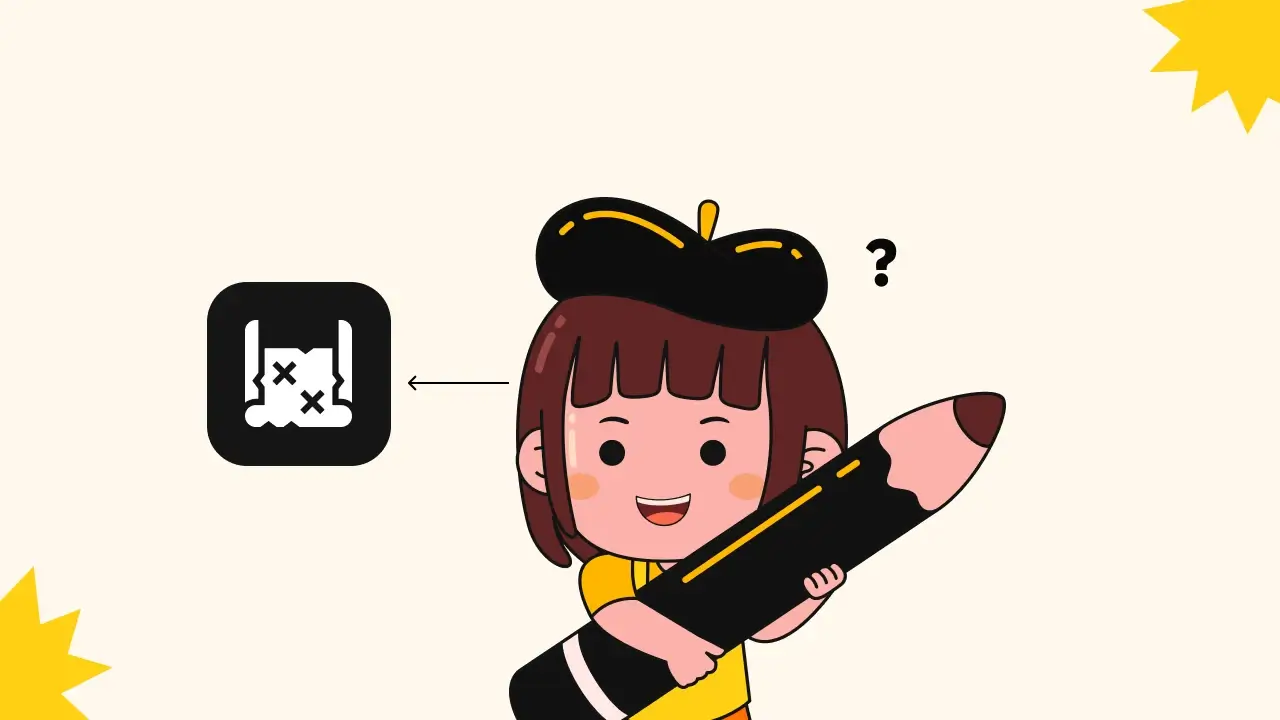
4.2 Computational Thinking for Elementary School Kids
As kids enter elementary school, their capacity for more structured problem-solving grows. This is the perfect time to introduce more defined computational thinking tasks, such as basic coding with visual programming languages like Scratch.
These activities can turn abstract concepts like algorithm design into tangible projects, like creating a simple animation or game. The magic here is in making learning an adventure. For instance, a treasure hunt to find patterns in nature or simple experiments to predict and observe outcomes can make these skills come alive.
4.3 Middle School Mastery: Advanced Computational Thinking Challenges
<Image 9: Computational thinking for middle and high school cartoon illustration>
By the time kids reach middle school, they’re ready to tackle more complex challenges. This is where computational thinking skills can really shine, with students applying them to everything from math problems to science projects.
They can begin to understand more intricate coding concepts, develop sophisticated algorithms, and even start to see how these ideas apply to real-world issues. Projects like designing a simple app to solve a problem at school or using data to make predictions about environmental changes empower kids to use computational thinking for social good.
In each of these stages, computational thinking goes beyond academic learning. It becomes a way of interacting with the world, fostering a mindset that’s curious, analytical, and creative.
Now, let’s explore tools and resources that can help kids learn and apply computational thinking.
5. Tools and Resources for Learning Computational Thinking for Kids
<Image 1o: Give heading- tools and resources for computational thinking then add the following points with relevant icons> 6 points: Interactive Games and Apps, Online Learning Platforms, Educational Robotics Kits, Puzzle Books and Board Games, DIY Projects and Crafts, Curriculum Guides and Lesson Plans
In the quest to empower kids with computational thinking skills, a diverse array of tools and resources stands ready to transform this complex concept into an engaging and enjoyable learning experience. From digital platforms to hands-on activities, here’s a roundup of the types of resources that can help foster computational thinking:
- Interactive Games and Apps: Engage kids with fun and interactive games designed to introduce basic coding concepts and problem-solving strategies. Apps like HackerKID have a collection of kid-friendly games that can offer a play-based introduction to computational thinking.
- Online Learning Platforms: Websites like HackerKID provide structured courses on various coding classes that range from beginner to advanced levels, allowing children to progress at their own pace while building coding projects that bring computational concepts to life.
- Educational Robotics Kits: Tools like LEGO Mindstorms, Ozobot, and Makey Makey introduce kids to the physical side of computational thinking, blending coding with tangible, hands-on projects.
- Puzzle Books and Board Games: For a screen-free approach, board games like Robot Turtles, Code Master, and puzzle books encourage logical thinking and problem-solving away from the computer.
- DIY Projects and Crafts: Encourage creativity and the application of computational thinking through DIY projects and crafts. Activities like creating binary bracelets, designing mazes, or building simple circuits integrate these concepts into everyday play.
- Curriculum Guides and Lesson Plans: For educators and parents looking to structure learning, numerous curriculum guides and lesson plans are available online. These resources provide structured activities and projects that align with educational standards in computational thinking.
Let’s discuss the role of parents and educators in developing computational thinking in children and a few expert-suggested tips that you can adopt.
Explore: Game Development for Kids: From Player to Developer
6. Tips for Parents and Educators to teach Computational Thinking for Kids
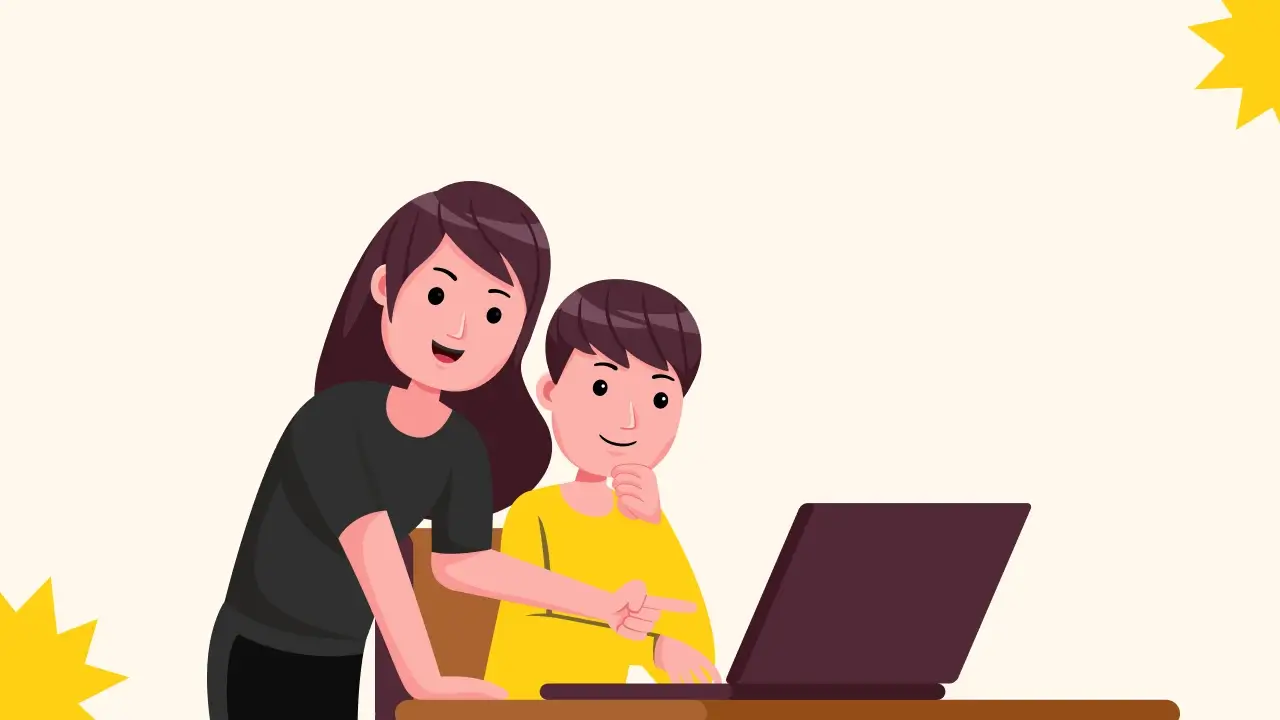
Nurturing computational thinking in kids is about more than just exposing them to coding or technology. It’s about fostering a mindset that sees problems as puzzles to be solved and encourages curiosity, creativity, and perseverance.
Here are some practical tips for parents and educators to help cultivate these skills:
- Encourage Exploration and Curiosity: Foster an environment where asking questions is encouraged, and there’s no such thing as a silly question. Whether it’s exploring how things work, experimenting with different solutions to a problem, or simply encouraging kids to try something new, fostering curiosity is the first step in developing computational thinking.
- Integrate Computational Thinking into Daily Activities: Computational thinking is beyond computer science. Use everyday activities to highlight these concepts. Cooking can teach algorithm design (following and creating recipes) while organizing a room can demonstrate decomposition (breaking the task into smaller, more manageable parts).
- Use Games and Puzzles: Board games, logic puzzles, and even video games can teach aspects of computational thinking like strategic planning, pattern recognition, and problem-solving. Games that require players to think a few steps ahead or solve puzzles are particularly useful.
- Introduce Coding in a Fun Way: There are countless resources available to teach coding in an engaging and age-appropriate way. From visual programming languages like Scratch for younger kids to more complex platforms like Python or JavaScript for older students, find something that matches their interests and skill level.
- Model Computational Thinking: Demonstrate these skills in your own thinking and problem-solving processes. Talk through how you’re breaking down a problem, identifying patterns, or designing a step-by-step solution to something. This not only shows computational thinking in action but also makes it a natural part of approaching challenges.
- Celebrate Failure as a Learning Opportunity: Emphasize that failure is not just okay; it’s a valuable part of learning. Computational thinking often involves trial and error, and learning from mistakes is crucial to finding solutions.
- Connect Computational Thinking to Real-World Problems: Show how these skills apply outside of academic exercises. Discuss real-world problems that can be addressed with technology and computational thinking, such as environmental challenges, healthcare, or community services. This not only demonstrates the relevance of these skills but also inspires kids to think about how they can make a difference.
By integrating these strategies into your interactions with children, you can help them develop not just computational thinking skills but a comprehensive problem-solving toolkit that will serve them in all areas of life.
Also Read: 8 Unbeatable Reasons to Teach Coding to Kids You Can’t Miss
7. Advantages of Computational Thinking For Kids Future
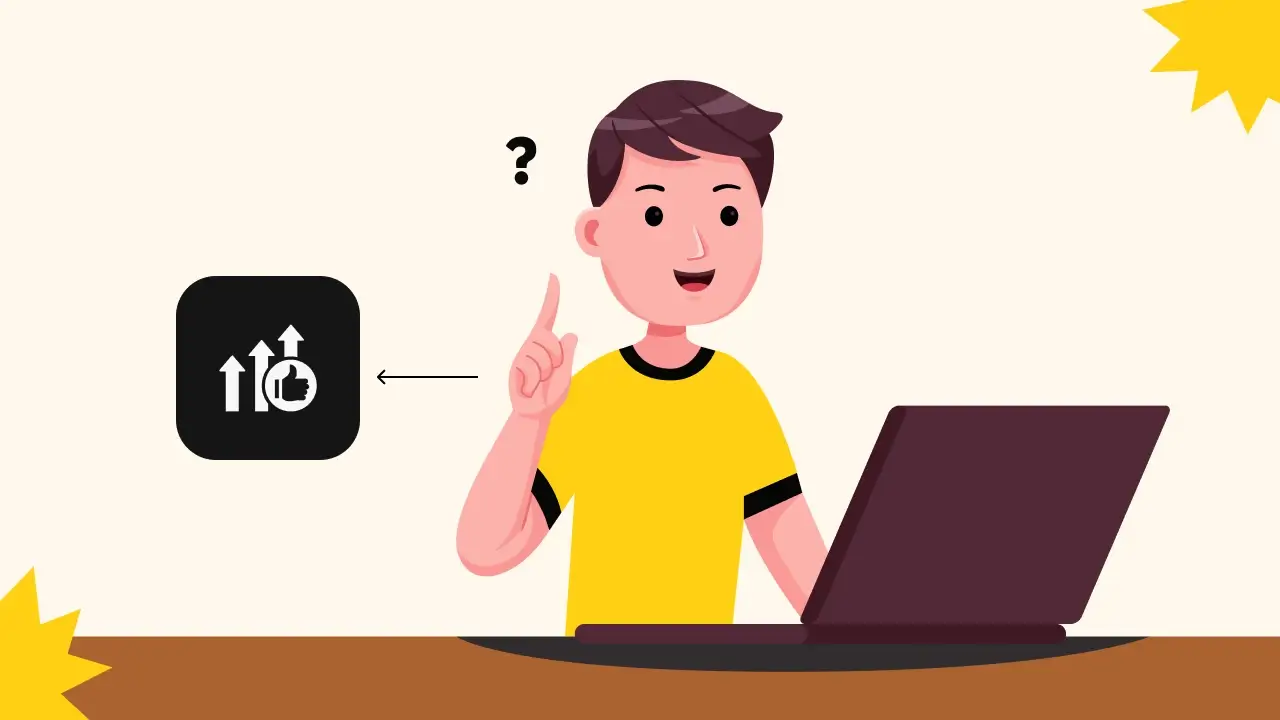
The world our children will inherit is one of complex challenges and rapid technological change. Computational thinking is a critical skill that will shape them into the problem solvers and innovators of tomorrow. Here’s how computational thinking prepares kids for this future:
- Adaptability to New Technologies: As technology evolves, so too must our ability to interact with it. Computational thinking equips kids with a foundational understanding of how technologies work, making it easier for them to adapt to new tools and platforms as they emerge.
- Problem-Solving for Complex Challenges: Many of the problems facing our world, from climate change to public health, are incredibly complex. Computational thinking teaches kids how to break down these challenges into manageable parts, identify patterns and underlying causes, and develop innovative solutions.
- Critical Thinking and Decision Making: In a world overloaded with information, the ability to analyze data, recognize biases, and make informed decisions is invaluable. Computational thinking fosters these critical thinking skills, enabling kids to navigate the digital landscape with discernment and confidence.
- Collaboration Across Disciplines: The interdisciplinary nature of computational thinking means that kids learn to see connections between subjects and how to apply a computational approach to a range of fields. This prepares them to work collaboratively across disciplines, combining diverse skills and perspectives to tackle complex problems.
- Empowerment to Create and Innovate: By understanding the principles of computational thinking, kids are not just consumers of technology; they become creators. They’re equipped with the skills to design their own apps, games, and solutions, contributing to the digital world in meaningful ways.
Learning tech has never been this fun!
Say goodbye to dull quizzes and hello to Buzzer, the ultimate computer science and technology MCQ game for kids! Pick your favorite topic, hit the buzzer, and tackle exciting gamified questions. Whether you’re playing for fun or competing, every round is an adventure. Think fast, answer smart, and climb the leaderboard. Play Buzzer now!
Final Words
As we wrap up our journey through the world of computational thinking for kids, it’s clear that this isn’t just about preparing our children for a future in technology. It’s about equipping them with a mindset that will serve them in every aspect of their lives. Computational thinking is about solving problems, sure, but it’s also about understanding the world, making informed decisions, and creating new possibilities.
Remember, the goal isn’t to turn every child into a computer scientist (unless that’s where their passion lies). Instead, it’s about opening doors to new ways of thinking and learning. By integrating computational thinking into their early education, we’re not just teaching kids how to code; we’re teaching them how to think. We’re giving them the tools to tackle any challenge, the resilience to persevere through difficulties, and the creativity to imagine new solutions.
Want to give your child a head start in coding? With HackerKid, they’ll follow a well-structured path built by experts, engage in fun, hands-on learning, and build real projects along the way. No confusion, no aimless browsing, just the right guidance at the right time.
Fill out the form for a personalized roadmap and start your child’s tech journey today!
Frequently Asked Questions
1. What is computational thinking, and why is it important for kids?
Computational thinking is a problem-solving process that includes skills like decomposition, pattern recognition, abstraction, and algorithm design. It’s important for kids because it prepares them for the future, enhancing their ability to solve complex problems, think critically, and embrace technology in creative ways.
2. At what age can kids start learning computational thinking?
Kids can start learning the basics of computational thinking at a very young age, even in preschool. Simple activities that involve sorting, patterning, and sequencing are great introductions.
3. What are the key components of computational thinking?
The key components are decomposition, pattern recognition, abstraction, and algorithm design. Together, they enable effective problem-solving and logical thinking.
4. In what ways does computational thinking improve problem-solving abilities in kids?
It teaches them to break down complex problems, recognize patterns, focus on relevant information, and devise step-by-step solutions, making problem-solving more manageable and efficient.
5. How can parents start teaching computational thinking through everyday activities?
Parents can incorporate computational thinking into daily activities like cooking (algorithm design), organizing toys (decomposition), or even family game night (pattern recognition and logical thinking).
6. How will learning computational thinking prepare kids for future careers?
It not only prepares them for careers in STEM fields but also develops universal skills like critical thinking, creativity, and adaptability, which are valuable in any career.
7. Are there any resources available for parents and educators to teach computational thinking?
Yes, there are numerous resources, including online platforms like Scratch and Code.org, educational apps, board games, and books that offer computational thinking activities for various age groups.
8. In what ways do games like Turtle and Zombieland help in learning computational thinking?
Games like Turtle and Zombieland engage kids in coding and problem-solving tasks, making learning fun and interactive while teaching fundamental computational thinking skills such as algorithm design and logical reasoning.







